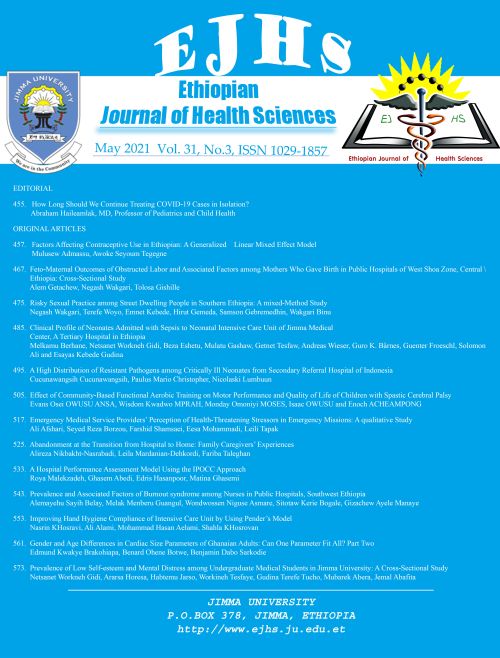Main Article Content
Risky Sexual Practice among Street Dwelling People in Southern Ethiopia: A mixed-Method Study
Abstract
BACKGROUND፡ The number of street dwellers in major cities in Ethiopia is rapidly increasing. However, their sexual health needs are not that much studied. Hence, this study assessed risky sexual practice and associated factors among street dwelling people in southern Ethiopia.
METHODS: A cross-sectional study employing a mixed method was conducted. For the quantitative part, a snowball sampling technique was made to conduct face-to-face interviews among 842 respondents. In-depth interviews among street dwellers and key informant interviews among stakeholders were conducted to collect qualitative data. A pre-tested and structured interviewer-administered questionnaire was used to collect data. The collected data were entered using Epidata and exported to SPSS for analysis, and qualitative data analyzed by thematic analysis approach.
RESULTS: About one third, 266(31.6%), of the participants had risky sexual practices within the last year of the study period. Sexual violence such as gang rape and same-sex practice were reported qualitatively. Male respondents (AOR: 3.24, 95%CI:2.09-5.02) had a more likelihood of risky sexual practice than females. Living in Dilla (AOR: 9.62, 95%CI: 4.49-20.58) and Wolaita Soddo towns (AOR: 14.35, 95%CI: 6.29-32.69) had also a more likelihood of risky sexual practice than living in Hawassa. Moreover, the daily average income of 21-50 Birr (AOR: 0.52, 95%CI: 0.29-0.92) had a less likelihood of risky sexual practice compared to those with a daily average income of 5-20 Birr.
CONCLUSION: Risky sexual practice among street dwelling people is found high. The Federal Ministry of Health and other stakeholders should work to cut risky sexual practices among street dwelling people.






